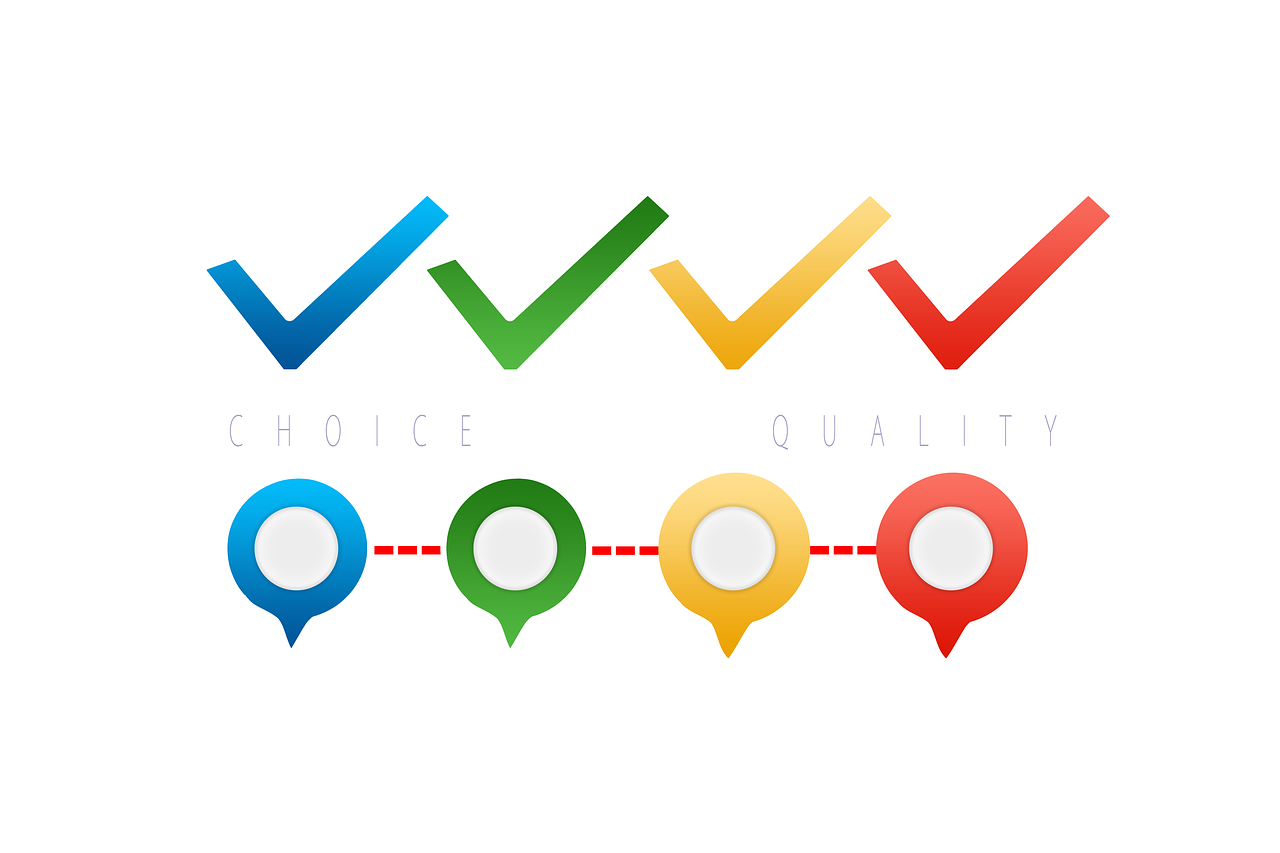NEWS
When testing, look at the big picture

A common martech activity is testing different UI/UX (content, design, flow, etc.) elements in order to optimize some metric like lead form conversion rate. While the actual responsibility for conducting such a test is usually assigned to a conversion rate optimizer, that doesn’t mean that other practitioners — regardless of whether they’re marketers, makers, modelers, or maestros — are not worth involving, since tests could have broad ramifications.
Indeed, A/B and multivariate testing typically have implications that reverberate throughout a martech stack — maybe beyond it. In some cases that fact may present itself during the experiment phase, while in others the implications may pop up later on during an implementation phase. That why it is important for martech practitioners to understand data flows.
Marketing and sales
The interaction between marketing and sales activities, is an example of a factor to consider. Definitions for marketing qualified leads (MQL) and sales qualified leads (SQL), while related, differ for good reasons. marketing and sales have different procedures, metrics, and goals.
For instance, a very common way people advocate to boost lead form conversion is to remove friction (in other words, fields). In many cases, people are more likely to complete a form that requires less input and interaction than a form that requires a lot. Simplifying a form could increase the quantity of leads while lowering the quality of leads. What’s good MQL-wise is not necessarily beneficial from the perspective of SQL metrics.
Some of the “expendable” fields are likely for lead scoring. They cause friction for marketing purposes, but they can help the sales team better understand a potential customer. This enables salespeople to focus on targets who show strong intent to purchase, as well as tailor their efforts to the lead’s circumstances.
So it’s entirely possible for an experiment variation that has fewer lead scoring fields to boost marketing conversions while inhibiting salespeople from closing deals. Thus, when conducting such an experiment, it’s important to consider and monitor downstream metrics.
Multi-departmental considerations
Another factor to consider is how and when to collect required information. This is important, since removing or moving data collection points in order to boost MQL or SQL metrics could likely have downstream ramifications — even after the sales process is completed.
For example, when selling insurance (health, dental, life, etc.) the final cost a policy will require knowing a lot of detailed and sensitive information about the person covered. Does it make sense to ask for a lot of that information on an initial lead form, so that when a salesperson follows up they can give the prospect a price estimate with some certainty? Or does it make sense to gather just some general information and allow the salesperson to provide a ballpark estimate along with how various factors will influence the cost? There are pros and cons to both approaches, and each could be pursued depending on whether more total leads or more qualified leads are called for.
However, it’s important to know what information is ultimately required. A prospect will have to provide all of it at some point to turn into a customer. Thus, toggling between those collection options will require a bigger picture view. If the decision is to remove a field from a lead form, when and where downstream will that information be collected?
This may involve teams and systems that are outside of the martech stack, and therefore could require multi-departmental orchestration. Then on top of that, if the decision is made to switch when certain information is collected, what happens to people who are in between the old and new collection points at the time of the switch?
Consider the big picture
It is crucial to consider the ramifications of common martech activities like conversion testing. That perspective will help better ensure success. For instance, there’s more to consider than MQL metrics, and at times, improved results with that one factor may come at a great cost down the line or in another crucial area.
As many practitioners can attest, sometimes changes are more complex than they may appear. It’s really annoying to invest effort into finding a way to boost an upstream metric to only find that it will not work due to downstream issues. Understanding data flows within and beyond the martech stack is one way to help mitigate against wasting time and effort on UI/UX testing that will ultimately not work out.
This story first appeared on MarTech Today.
https://martechtoday.com/when-testing-look-at-the-big-picture-248189
Opinions expressed in this article are those of the guest author and not necessarily Marketing Land. Staff authors are listed here.
Author:
Steve Petersen is a marketing technology manager at Western Governors University in Salt Lake City, Utah. He started on WGU’s marketing website team where he helped create and implement several initiatives including site redesign and maintenance, multivariate testing, user testing and mobile app development.
This Week in Search News: Simple and Easy-to-Read Update

Here’s what happened in the world of Google and search engines this week:
1. Google’s June 2024 Spam Update
Google finished rolling out its June 2024 spam update over a period of seven days. This update aims to reduce spammy content in search results.
2. Changes to Google Search Interface
Google has removed the continuous scroll feature for search results. Instead, it’s back to the old system of pages.
3. New Features and Tests
- Link Cards: Google is testing link cards at the top of AI-generated overviews.
- Health Overviews: There are more AI-generated health overviews showing up in search results.
- Local Panels: Google is testing AI overviews in local information panels.
4. Search Rankings and Quality
- Improving Rankings: Google said it can improve its search ranking system but will only do so on a large scale.
- Measuring Quality: Google’s Elizabeth Tucker shared how they measure search quality.
5. Advice for Content Creators
- Brand Names in Reviews: Google advises not to avoid mentioning brand names in review content.
- Fixing 404 Pages: Google explained when it’s important to fix 404 error pages.
6. New Search Features in Google Chrome
Google Chrome for mobile devices has added several new search features to enhance user experience.
7. New Tests and Features in Google Search
- Credit Card Widget: Google is testing a new widget for credit card information in search results.
- Sliding Search Results: When making a new search query, the results might slide to the right.
8. Bing’s New Feature
Bing is now using AI to write “People Also Ask” questions in search results.
9. Local Search Ranking Factors
Menu items and popular times might be factors that influence local search rankings on Google.
10. Google Ads Updates
- Query Matching and Brand Controls: Google Ads updated its query matching and brand controls, and advertisers are happy with these changes.
- Lead Credits: Google will automate lead credits for Local Service Ads. Google says this is a good change, but some advertisers are worried.
- tROAS Insights Box: Google Ads is testing a new insights box for tROAS (Target Return on Ad Spend) in Performance Max and Standard Shopping campaigns.
- WordPress Tag Code: There is a new conversion code for Google Ads on WordPress sites.
These updates highlight how Google and other search engines are continuously evolving to improve user experience and provide better advertising tools.
Facebook Faces Yet Another Outage: Platform Encounters Technical Issues Again

Uppdated: It seems that today’s issues with Facebook haven’t affected as many users as the last time. A smaller group of people appears to be impacted this time around, which is a relief compared to the larger incident before. Nevertheless, it’s still frustrating for those affected, and hopefully, the issues will be resolved soon by the Facebook team.
Facebook had another problem today (March 20, 2024). According to Downdetector, a website that shows when other websites are not working, many people had trouble using Facebook.
This isn’t the first time Facebook has had issues. Just a little while ago, there was another problem that stopped people from using the site. Today, when people tried to use Facebook, it didn’t work like it should. People couldn’t see their friends’ posts, and sometimes the website wouldn’t even load.
Downdetector, which watches out for problems on websites, showed that lots of people were having trouble with Facebook. People from all over the world said they couldn’t use the site, and they were not happy about it.
When websites like Facebook have problems, it affects a lot of people. It’s not just about not being able to see posts or chat with friends. It can also impact businesses that use Facebook to reach customers.
Since Facebook owns Messenger and Instagram, the problems with Facebook also meant that people had trouble using these apps. It made the situation even more frustrating for many users, who rely on these apps to stay connected with others.
During this recent problem, one thing is obvious: the internet is always changing, and even big websites like Facebook can have problems. While people wait for Facebook to fix the issue, it shows us how easily things online can go wrong. It’s a good reminder that we should have backup plans for staying connected online, just in case something like this happens again.
NEWS
We asked ChatGPT what will be Google (GOOG) stock price for 2030

Investors who have invested in Alphabet Inc. (NASDAQ: GOOG) stock have reaped significant benefits from the company’s robust financial performance over the last five years. Google’s dominance in the online advertising market has been a key driver of the company’s consistent revenue growth and impressive profit margins.
In addition, Google has expanded its operations into related fields such as cloud computing and artificial intelligence. These areas show great promise as future growth drivers, making them increasingly attractive to investors. Notably, Alphabet’s stock price has been rising due to investor interest in the company’s recent initiatives in the fast-developing field of artificial intelligence (AI), adding generative AI features to Gmail and Google Docs.
However, when it comes to predicting the future pricing of a corporation like Google, there are many factors to consider. With this in mind, Finbold turned to the artificial intelligence tool ChatGPT to suggest a likely pricing range for GOOG stock by 2030. Although the tool was unable to give a definitive price range, it did note the following:
“Over the long term, Google has a track record of strong financial performance and has shown an ability to adapt to changing market conditions. As such, it’s reasonable to expect that Google’s stock price may continue to appreciate over time.”
GOOG stock price prediction
While attempting to estimate the price range of future transactions, it is essential to consider a variety of measures in addition to the AI chat tool, which includes deep learning algorithms and stock market experts.
Finbold collected forecasts provided by CoinPriceForecast, a finance prediction tool that utilizes machine self-learning technology, to anticipate Google stock price by the end of 2030 to compare with ChatGPT’s projection.
According to the most recent long-term estimate, which Finbold obtained on March 20, the price of Google will rise beyond $200 in 2030 and touch $247 by the end of the year, which would indicate a 141% gain from today to the end of the year.
Google has been assigned a recommendation of ‘strong buy’ by the majority of analysts working on Wall Street for a more near-term time frame. Significantly, 36 analysts of the 48 have recommended a “strong buy,” while seven people have advocated a “buy.” The remaining five analysts had given a ‘hold’ rating.

The average price projection for Alphabet stock over the last three months has been $125.32; this objective represents a 22.31% upside from its current price. It’s interesting to note that the maximum price forecast for the next year is $160, representing a gain of 56.16% from the stock’s current price of $102.46.
While the outlook for Google stock may be positive, it’s important to keep in mind that some potential challenges and risks could impact its performance, including competition from ChatGPT itself, which could affect Google’s price.
Disclaimer: The content on this site should not be considered investment advice. Investing is speculative. When investing, your capital is at risk.
-

 SEARCHENGINES5 days ago
SEARCHENGINES5 days agoBillions Of Google goo.gl URLs To 404 In The Future
-

 SEO7 days ago
SEO7 days ago26 Common SEO Myths, Debunked
-
SEARCHENGINES4 days ago
Daily Search Forum Recap: July 22, 2024
-

 SEARCHENGINES6 days ago
SEARCHENGINES6 days agoGoogle Core Update Coming, Ranking Volatility, Bye Search Notes, AI Overviews, Ads & More
-

 SEO5 days ago
SEO5 days ago11 Copyscape Alternatives To Check Plagiarism
-

 SEO6 days ago
SEO6 days agoGoogle Warns Of Last Chance To Export Notes Search Data
-
SEARCHENGINES3 days ago
Daily Search Forum Recap: July 23, 2024
-

 AFFILIATE MARKETING5 days ago
AFFILIATE MARKETING5 days agoThe Top 5 AI Tools That Can Revolutionize Your Workflow and Boost Productivity



